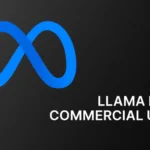The release of Meta’s Llama family of models has been nothing short of revolutionary, democratizing access to state-of-the-art AI. However, for developers and AI enthusiasts eager to run these powerful tools on their own hardware, a significant challenge has emerged: finding clear, consolidated, and practical information. The technical requirements are not just a simple checklist; they involve understanding key concepts that determine success or failure.
This guide solves that problem definitively.
We have moved beyond a simple data sheet to create a comprehensive educational resource. This is your authoritative manual for the full hardware and software Llama AI requirements, explaining not just the ‘what’, but the ‘why’. First, you’ll find the direct hardware requirements for each model family. Following the data, we provide a deep dive into the foundational concepts, tools, and real-world bottlenecks you need to understand for a successful deployment.
Llama 4 Requirements: The Mixture-of-Experts Challenge
The Llama 4 family’s Mixture-of-Experts (MoE) architecture is a game-changer. It allows for a massive increase in total parameters (knowledge) without a proportional increase in computational cost. However, this creates the “memory paradox”: the entire model (e.g., all 400B parameters of Maverick) must be loaded into memory, even though only a fraction is used per token. This makes total system RAM and PCIe bandwidth the primary bottlenecks.
| Model | Parameters (Active / Total) | Key Architecture | Min. VRAM (Quantized) | Rec. System RAM | Feasibility & Target User |
|---|---|---|---|---|---|
| Llama 4 Scout | 17B / 109B | Multimodal MoE | 48 GB | 128 GB | Prosumer / Workstation. Possible on 24GB GPUs but expect very slow performance due to heavy CPU offloading. |
| Llama 4 Maverick | 17B / 400B | Multimodal MoE | 250+ GB | 512+ GB | Datacenter Only. Requires a multi-GPU server (e.g., 4x H100) and is not feasible for individuals. |
Llama 3.3 Requirements: Peak Efficiency for Text
Llama 3.3 70B is a masterpiece of efficiency, engineered to deliver performance competitive with much larger models but with a significantly reduced hardware footprint. It’s a powerful and cost-effective workhorse for a wide range of sophisticated text-based tasks, from coding to complex reasoning. Its large 128K context window and optimizations make it a prime choice for prosumer and workstation-grade deployments.
| Model | Parameters (Active / Total) | Key Architecture | Min. VRAM (Quantized) | Rec. System RAM | Feasibility & Target User |
|---|---|---|---|---|---|
| Llama 3.3 70B | 70B / 70B | Text-only, GQA | 48 GB | 64 GB | Prosumer / Workstation. Runs well on dual 24GB GPUs (e.g., 2x RTX 4090) or a single professional 48GB card. |
Llama 3.2 Requirements: Vision, Efficiency, and Edge Models
The Llama 3.2 family marked a period of rapid diversification, introducing Meta’s first open-weight vision models and ultra-lightweight variants for on-device computing. This family offers something for everyone, from developers experimenting with multimodal AI on consumer hardware to those needing a capable, low-resource model for edge applications. The requirements vary dramatically, making a direct comparison essential.
| Model | Parameters (Active / Total) | Key Architecture | Min. VRAM (Quantized) | Rec. System RAM | Feasibility & Target User |
|---|---|---|---|---|---|
| Llama 3.2 90B Vision | 90B / 90B | Multimodal | 64 GB | 128 GB | Workstation / Datacenter. Requires a multi-GPU setup. |
| Llama 3.2 11B Vision | 11B / 11B | Multimodal | 12 GB | 16 GB | Consumer. An excellent and accessible choice for running on modern gaming GPUs like the RTX 3060 or better. |
| Llama 3.2 3B | 3B / 3B | Text-only | 4 GB | 8 GB | Edge / CPU-Friendly. Runs effortlessly on almost any modern computer, even without a dedicated GPU. |
| Llama 3.2 1B | 1B / 1B | Text-only | 4 GB | 8 GB | Edge / CPU-Friendly. The most lightweight option, perfect for mobile and embedded systems. |
Llama 3.1 Requirements: Taming the 405B Frontier Model
The Llama 3.1 family, headlined by its colossal 405B model, was Meta’s entry into the frontier-level AI space. Running the 405B model is a monumental undertaking that is fundamentally a datacenter-scale operation. “Local deployment” for this model means running it on a private, self-managed server cluster. The 8B and 70B variants, however, are far more accessible and offer incredible power for their respective hardware tiers.
| Model | Parameters (Active / Total) | Key Architecture | Min. VRAM (Quantized) | Rec. System RAM | Feasibility & Target User |
|---|---|---|---|---|---|
| Llama 3.1 405B | 405B / 405B | Dense Text-only | 250+ GB | 512+ GB | Datacenter Only. Needs a cluster of high-end GPUs (e.g., 4x-8x NVIDIA H100s) and specialized frameworks. |
| Llama 3.1 70B | 70.6B / 70.6B | Dense Text-only | 48 GB | 64 GB | Prosumer / Workstation. The classic high-performance choice for users with professional or dual-GPU setups. |
| Llama 3.1 8B | 8B / 8B | Dense Text-only | 12 GB | 16 GB | Consumer. A fantastic starting point that runs well on single high-VRAM consumer GPUs like the RTX 3090/4090. |
Deep Dive: Understanding the Core Concepts for Local Deployment
The tables above give you the ‘what’, but understanding the ‘why’ is crucial for a smooth experience. This section breaks down the foundational knowledge you need.
Foundational Requirements: The Universal Checklist
Before diving into specific models, every local Llama deployment stands on a common foundation of software and concepts. Getting this right is half the battle.
The Core Software Stack: Your Python Environment
A stable and correctly configured software environment is non-negotiable. Here’s what you absolutely need:
- Python: A recent version (Python 3.8 or newer is a safe bet) is required. We strongly recommend using a virtual environment manager like Conda or Python’s built-in
venvto prevent dependency conflicts. - PyTorch: This is the deep learning framework Llama was built on. Your PyTorch installation must be compatible with your GPU’s CUDA version to enable hardware acceleration.
- Hugging Face Libraries: These are essential for most users.
transformersis used to load the model and tokenizer,accelerateintelligently manages how the model is distributed across your hardware (VRAM and RAM), andbitsandbytesis the key that unlocks on-the-fly quantization to run large models on smaller GPUs. - NVIDIA Drivers & CUDA Toolkit: For NVIDIA GPU users, having the latest drivers and a compatible CUDA Toolkit (version 11.8 or newer) is mandatory for performance. You can check your driver status with the
nvidia-smicommand in your terminal.
A Primer on Quantization (GGUF & 4-bit): Your Key to Accessibility
This is the single most important concept for running large models on consumer hardware. In simple terms, quantization is the process of reducing the numerical precision of a model’s weights. Think of it like saving a high-resolution photograph as a smaller, compressed JPG. The file size is drastically smaller, but the image is still perfectly recognizable.
- FP16 (Full Precision): Most models are trained in 16-bit floating point precision. This offers the highest accuracy but demands the most VRAM. A 70B parameter model requires ~140GB of VRAM in FP16.
- INT4 (4-bit Integer): This is a common quantization level that reduces the model’s VRAM requirement by a factor of 4! That same 70B model now only needs ~35GB, bringing it into the realm of possibility for high-end consumer hardware.
- GGUF (GPT-Generated Unified Format): This is the magic format used by tools like Ollama and llama.cpp. A GGUF file is a single, portable file that contains everything—the model architecture, the tokenizer, and the already-quantized weights. This makes running models incredibly simple.
Choosing Your Weapon: A Guide to Local Execution Frameworks
Once you have a model, you need a tool to run it. The ecosystem offers several fantastic options catering to different needs:
- Ollama: The best choice for simplicity and quick setup. With a single command, Ollama pulls a pre-quantized GGUF model and starts an API server. It’s the fastest way to go from zero to chatting with a Llama model.
- LM Studio: If you prefer a graphical user interface (GUI), LM Studio is for you. It offers a beautiful desktop chat interface, a built-in model browser for discovering different GGUF versions, and simple point-and-click server configuration. It’s built on llama.cpp, so it’s highly performant.
- llama.cpp: For power users who want maximum performance and control. This is a C/C++ implementation of the Llama inference code. It requires compilation but offers the highest speed, minimal dependencies, and fine-grained control over GPU offloading and other performance settings.
The Real-World Bottleneck: VRAM vs. System RAM
A common question is: “Can I run a 70B model on my 24GB RTX 4090?” The answer is yes, but it comes with a crucial trade-off: performance. This is achieved by “offloading” layers of the model that don’t fit in your GPU’s VRAM into your computer’s main system RAM. Think of VRAM as your immediate workbench (extremely fast) and system RAM as a nearby warehouse (much larger, but slower to access). When the GPU needs a layer that’s in RAM, it has to be transferred over the PCIe bus, which creates a delay. This is why, for very large models, you’ll experience slower token generation speeds. For the best interactive experience, you want as much of the model as possible to fit directly into VRAM.
Choosing the right Llama model is a strategic balance between your hardware’s capabilities, your budget, and your project’s goals. By understanding the core concepts of quantization and the trade-offs of memory offloading, you can move beyond spec sheets to make an informed, practical decision. This guide has equipped you to provision your environment correctly and successfully bring the power of Meta’s Llama models to your local machine.






